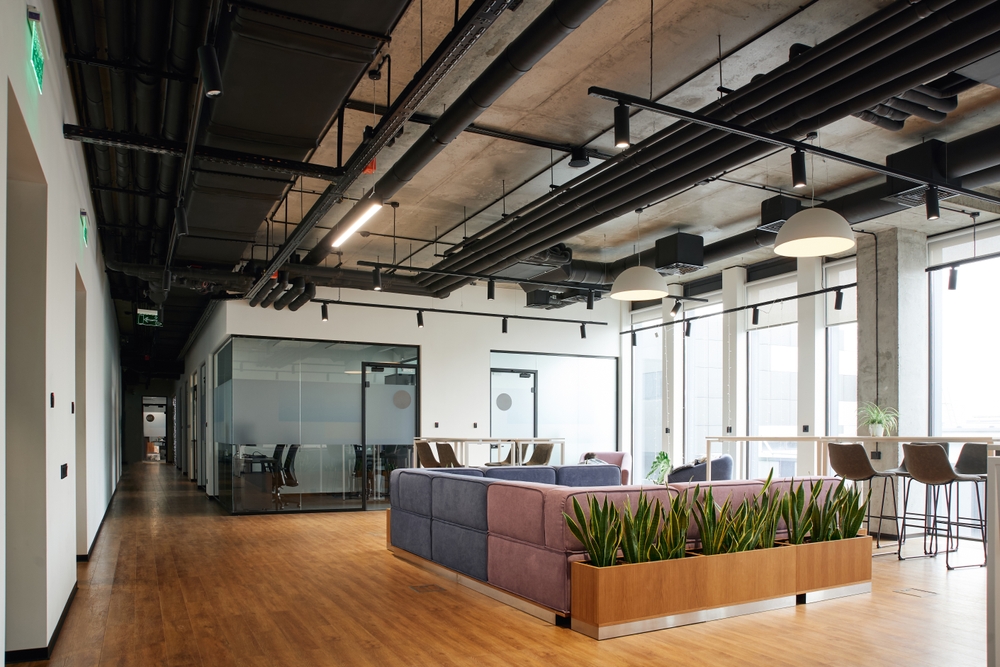Creating a healthy office environment is crucial for employee well-being and productivity. Employers play a key role in ensuring that the workspace promotes physical and mental health. Here are some practical tips to help you achieve this.
Ergonomic Workstations
Ergonomics is about designing workspaces that fit the needs of employees, reducing strain and discomfort.
Invest in adjustable chairs, desks, and monitors to allow employees to customise their workstations. Ensure that monitors are at eye level, chairs provide proper lumbar support, and desks accommodate comfortable typing postures. Ergonomic workstations can prevent musculoskeletal issues and improve overall comfort.

Encourage Movement
Sitting for prolonged periods can have negative health effects. Encourage employees to take regular breaks to stand, stretch, or walk around. Consider implementing sit-stand desks, which allow employees to alternate between sitting and standing.
Organise walking meetings or provide a dedicated space for short exercise breaks. Promoting movement can enhance physical health and reduce the risk of sedentary-related ailments.
Maintain Good Indoor Air Quality
Good air quality is essential for a healthy office environment. Ensure proper ventilation by keeping windows open when possible and using air purifiers. Regularly service HVAC systems to prevent the buildup of dust and allergens.
Incorporate indoor plants to improve air quality and add a touch of nature to the office. Clean air reduces respiratory issues and, unsurprisingly, creates a more pleasant working atmosphere.
Regular Health and Safety Audits
Regular health and safety audits can help identify potential risks and areas for improvement. Engage professional health and safety services, such as those offered by Citation, to conduct thorough audits and provide recommendations. These services can help ensure compliance with regulations and create a safer workplace.

Adequate Lighting
Lighting plays a significant role in employee well-being. Maximise natural light by arranging desks near windows.
Use adjustable lighting solutions to reduce glare and eye strain. Provide task lighting for detailed work to ensure employees have enough light for their tasks without causing discomfort. Proper lighting can enhance mood, reduce eye fatigue, and boost productivity.
Promote a Clean and Organised Space
A clean and organised workspace can positively impact mental health and productivity. Implement regular cleaning schedules and encourage employees to keep their desks tidy. Provide ample storage solutions to reduce clutter. An organised office can reduce stress, improve focus, and create a more
pleasant work environment.
Support Mental Health
Supporting mental health is as important as physical health. Create a supportive environment where employees feel comfortable discussing mental health issues. Offer resources such as counselling services, mental health workshops, and stress management programs.
Encourage regular breaks and a healthy work-life balance to prevent burnout. A supportive approach to mental health can enhance overall well-being and job satisfaction.

Healthy Eating Options
Providing healthy eating options can contribute to a healthier workplace. Stock the office kitchen with nutritious snacks and beverages. If your company offers catered meals or has an on-site cafeteria, ensure that healthy choices are available.
Encourage employees to take regular lunch breaks away from their desks to promote healthy eating habits.
Flexible Work Arrangements
Offering flexible work arrangements can improve work-life balance and reduce stress. Allow employees to work remotely or adjust their hours to suit their personal needs. Flexible arrangements can increase job satisfaction, reduce commuting stress, and create a more accommodating work environment.
By implementing these tips, employers can create a healthy office environment that supports both physical and mental well-being. Prioritising health in the workplace not only benefits employees but also enhances productivity and overall company success.





